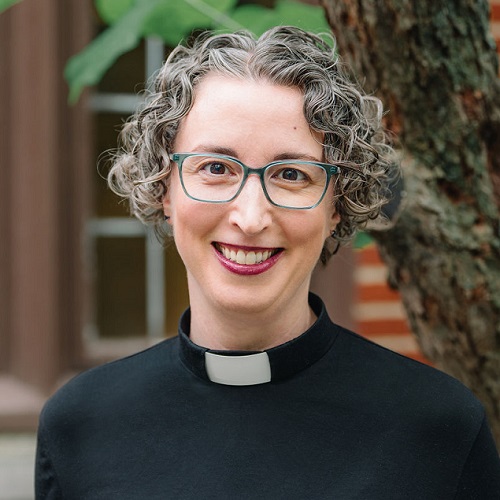David: How we got here
I’ve long been attracted to the communal nature of preaching: a sermon to me is not the final interpretive word but is instead an invitation to the community to think more deeply about how the day’s scripture passages connect to their lives. So, when I heard that a friend from seminary had preached a dialogue sermon with his colleague, I asked my supervisor and colleague, Gia, if we could try, and she said yes! I didn’t know how we’d do it, but I hoped that each of us speaking both to the congregation and each other could deepen that sense of communal invitation that I value in preaching, and I think it has. Here’s how we’ve been doing it:
Gia: How we preach dialogue sermons
Honor each other’s preaching styles. The best sermons speak in the preacher’s authentic voice, and dialogue sermons can respect each preacher’s style even when they contrast. I preach from the pulpit with a full manuscript; that’s how my brain works. David preaches from the center aisle without notes; he’s been influenced by improv comedy classes. We write out close to a full manuscript, then each of us preaches our sections in our own way, me with my text in hand, David from memory.
Collaborate in the composition. We pray over the texts and exegete them together, then sketch out where the sermon will go. We use Google Docs, a free app meant for collaboration, to write the sermon, with each of us fleshing out our sections. Often we are sitting next to each other typing out a conversation without saying a word, which is weird, but it works!
Plan out the transitions between preachers. I might ask a question for David to answer. Or he reflects back what he’s heard from me. Or we make a connection between what the other has just said and where we want to go.
Decide where both preachers will sit or stand. Our congregation is blessed with a beautiful, historic worship space that is notoriously cramped. Two people will not fit in or near our pulpit. When we preached our first dialogue sermon, we were worshiping in the parish hall thanks to repairs to our nave ceiling, so we didn’t have both a pulpit and a lectern available. We brought in a couple of bar stools to sit on and experimented with their placement, to ensure both of us could be seen and heard. We continue to use the bar stools now that we’re back in the nave.
Leave space for spontaneity and banter. The joy of the Christian faith is one of our parish’s core values, and we laugh together a lot. Our joint sermons turn out to be funnier than when we preach solo, with some jokes planned and some ad-libbed. In our second dialogue sermon, I used a bag of chocolate as a prop and handed it to David, who took a piece and spontaneously passed the bag over to the pews. I blurted, “Hey, don’t give that all away! I need some for the late service!” Our people loved it.
David: Some benefits we’ve noticed
Shows the congregation how we read scripture. William Countryman observes in Interpreting the Truth that for Episcopalians, biblical interpretation is a three-way conversation among the text, the reader, and other interpreters both past and present.1 A dialogue sermon can show the congregation that interpretation is not in the hands of one preacher, but can be a larger communal effort.
Shows how we work as a team. After we preached together for the first time, a parishioner remarked that the sermon gave the congregation an insight into how we work together, and demonstrated the health and collaboration among the clergy staff. I was chuffed to hear that—I like that this style of preaching can model collaborative leadership.
Develops how we work as a team. The experience of working together on our collaborative sermons has influenced our solo sermons. Since our first collaborative sermon, the frequency with which we have referenced each other’s solo sermons in our own solo sermons has gone up, which I think shows that collaborative preaching moves us away from being siloed preachers each doing our own thing, to weekly collaborators but still with our own unique voices.
Gia: Scripture passages to try
I can’t really think of a pericope that doesn’t lend itself to a collaborative sermon. Some specific texts are well suited to this type of preaching:
- The confession of Peter (our first dialogue sermon): Who does each of you say that Jesus is?
- Difficult parables: the dishonest manager, the wise and foolish bridesmaids (our second dialogue sermon), the wicked tenants. By demonstrating how two different readers interpret these parables, dialogue sermons can model how Christians grapple with hard texts, and also remind listeners that scripture has more than one valid interpretation.
- Resurrection narratives: give witness to the ways each of you have experienced resurrection.
Dialogue sermons have been a gift to us and our congregation. We plan to preach them about once a quarter. Ministry is a collaborative effort among all members of the body of Christ; all of us depend on our lay and clergy colleagues, in our own congregations and beyond them. David and I have realized that Jesus can send us out two by two into the pulpit as well as into the world.
Notes
- William Countryman, Interpreting the Truth: Changing the Paradigm of Biblical Studies (Harrisburg, PA: Trinity Press International, 2003), 16.


